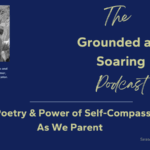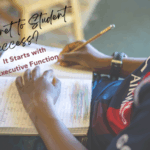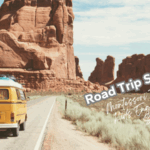Storytelling is in our DNA. As human beings, we evolved to tell stories as a way to convey emotion and share information. Storytelling is how we educate and entertain. It’s how we learn about our world and find meaning in it. More than anything, storytelling is how we connect with one another.

As the literary scholar Jonathan Gottschall wrote, “We are, as a species, addicted to story. Even when the body goes to sleep, the mind stays up all night, telling itself stories.”
For parents and educators, storytelling is a powerful tool – a way to help a child’s language and imagination bloom. We know from research that the ability to tell engaging stories can be a barometer of one’s intelligence. We also know from brain imaging studies that when children and adults read or listen to stories it lights up parts of their brains that process complex information.
The act of sharing and listening to stories creates an emotional mirroring effect: An imaging study at Princeton University showed that when we listen to another person tell a story it causes our brain waves to synchronize with those of the storyteller.
As the parent of a child at Marin Montessori – and a journalist who has been writing stories for the New York Times and other news outlets for two decades – I was thrilled when I found out that storytelling is a central component of the MMS experience. I discovered that at every level of the MMS education – from the Toddler and Primary program to the Elementary and Junior High programs – children are inspired to learn, grow, and develop through the art of storytelling.
It starts in the Toddler program, where children who enter with just a few nouns in their budding vocabularies are taught to string their words together into rudimentary sentences. In the classroom, their Montessori guides read books and show them language cards to help them build their vocabularies.

They take part in lessons where their guides might cut open a simple object like a pear or papaya and tell them stories about it to elicit their wonder, says Siri Panday, the Director of Education for Toddler and Primary. “They’ll say things like, ‘I wonder what it looks like inside, shall we cut it open and see?’ And of course, a papaya is very interesting inside. Then the toddlers will have an opportunity to taste it as well. So, as much as possible, our conversation that we’re offering the toddler is going to be grounded in something that is hands-on, experiential, and very interesting to them.”
Outside the classroom, on any given day, you might find our Toddler guides and assistants leading their students on a walk along the water, narrating and identifying objects that they spot along the way. Do you see that lovely white egret over there on the marsh? Shall we take a walk over that bridge? Do you see those beautiful flowers along the water? These activities – and the narration that the guides provide – help the toddlers develop their vocabularies and experience their worlds through the lens of language.
As the toddlers get older and move on to the Primary program, their guides take further steps to nurture their language. They greet them warmly each morning, engage them in conversations, entertain them with stories, and begin the process of teaching them to read and write. “We have a full curriculum to get them to be able to express themselves in writing – that’s a really big piece of the Primary program,” says Siri. “Step by step we build up skills using tools like language cards and the movable alphabet so that they’re able to express what’s on their mind.”
By the time they get to the Elementary program, children at Marin Montessori have developed the skills to tell their own stories. At this point, they are introduced to a curriculum that Maria Montessori called cosmic education. She called it this because the curriculum is all-encompassing. “Everything in the cosmos is to be included because the students are so eager for intellectual development and information in the elementary grades that they want to study everything out there,” says Minnie Wales, the Director of Education for Elementary.

With this cosmic education as their framework, the Elementary students are taught a series of five “Great Stories” each year. Through these stories, they learn how the universe began, how life on earth originated, and how humans came to be. They learn what makes humans different from other animals, the unique skills that we share as a species, and how language came to be.
They learn about everything from subatomic particles to solar systems, which leads to lessons about chemistry, physics, and the history of humanity. This helps them learn about their place in the world. Then they learn stories about their peers and a variety of historical figures. Eventually, they develop the ability to write sentences and paragraphs so they can create and share their own stories.
“A lovely thing about our Elementary program is that the students write speeches at the end of their sixth year before they move onto the junior high on a different campus,” Minnie says. “Essentially, those speeches are stories about themselves and what they have learned and know about themselves and the gifts that they want to bring to the world.”
In the Junior High program, there’s a continued reliance on storytelling as a tool to educate and inspire. In a typical day, students might learn about an important historical period, like the Great Depression or Reconstruction, in a way that highlights what people were experiencing at that time, the obstacles they overcame, and the problems they solved. Then they get to do their own research on the subject and present their interpretations and perspectives on it to their peers so they have a collective understanding of it. “They get to be scholars when they present,” says Bill Sneed, the Junior High Director. “They’re not just reporting back the facts. They’re learning how to do critical thinking. There’s allowance for things to be told from their perspective. We make it safe for them to take chances with their ideas.”
A core principle in the Junior High program is that students are provided insights and lessons by their teachers. Then they get to digest that information and build on and add to it through their own initiatives. This all leads to fun storytelling opportunities that are shared with their entire class.

This year for example the students studied the Great Depression and created a wax museum where they got to dress up as historical figures from that era. Another topic of study this year is immigration, which will give students an opportunity to share personal stories about their cultures and family histories.
“The students create a booth where they have food prepared and photos of where their families have come from,” says Bill Sneed. “That was an idea generated by them. It’s all part of this immigration story. They get to share their own storylines in a way in which they can appreciate each other’s backgrounds and cultures.”
Storytelling is such a rich and essential part of the Marin Montessori education that I can’t imagine a better theme for this year’s Gather for Good. But your child’s education in storytelling shouldn’t end when they leave the Montessori campus each day: It should continue at home. That is one way to ensure that they flourish and grow into happy and intelligent adults. With that in mind, here are some things we can do as parents and caretakers to continue the storytelling experience at home.
For Children in the Toddler and Primary Programs:
- Keep and maintain a rotation of reality-based and interesting books, including board books and books with illustrations for children under three.
- Keep a small basket with a few books in each room in your home to inspire opportunities for looking at books and reading to your child.
- Enjoy dinner table conversation. Take turns listening to each other and role model turn-taking and listening. For anyone reluctant to share, ask simple questions about their friends, teachers, and peers at school to get the conversation started.
- “Tell true stories about your life – especially when you were a child or had a hard time doing something and then overcame it,” says Siri Panday. “Children like hearing about how adults had to practice and learn things, it helps them to understand and form a growth mindset.”
- For younger children, be sure to name and talk about directly observable things using specific and descriptive language. Admire things in the world with your child and then describe what you see – for example plants, animals, and landscapes. It’s important to notice and admire the world with your child. When you take road trips, spot things outside the window and talk about them.
- Unplug and be together in conversation. “Putting away screens allows us time for conversation and we can model and enjoy that with our children,” says Siri. “Try to place your cell phones just out of reach – for example, in the hallway at a charging station. That way phones are near, but not as distracting and tempting.”
For Elementary-Aged Children and Older:
Read fiction stories of all kinds and discuss them with your children. Ask questions like:
- What do you think the main character was thinking about when she said that?
- Are there any hints that let us know where this story is taking place? What are they?
- Why do you think the author of this story decided to write it down?
- What do you think is going to happen next?
- Do you think this character is good or bad? Why? Can they be both?
Listen to all kinds of stories from your child:
- “Demonstrate that your children’s stories are important to you,” says Minnie Wales. “Listen attentively. Put down other things to listen to them. If you are busy, let them know that you want to give them your whole attention and schedule a time to listen when you know you will be available.”
- Ask them questions:
- About themselves: What do you know about yourself? What do you think you are good at? What do you feel like you need help with? Who do you feel like you can go to for help? What makes you feel that way?
- When wonderful things happen: Tell me everything! What did you see, hear, feel, smell, taste, think? How did it affect you? Others?
- When hard things happen: What was hard about that? Is there anything you learned? Is there anything you’d like to do differently next time? What is important to you?
- “Please remember that it is essential for our children to experience hardship,” says Minnie. “And by listening and engaging in these stories, we are demonstrating how to sit with hard things, how to talk about them, and thus how it is possible to get through them.”
- Write down stories together. “Families Writing” by Peter Stillman is a wonderful resource for story-writing ideas for families. “I’ve used many of his ideas in the classroom to get collaborative writing projects going with groups of students,” says Minnie. “And, they are really fun to do at home too!”

Anahad O’Connor is an award-winning journalist and health columnist for The Washington Post. He was previously a staff reporter for The New York Times. He has spent two decades covering health and wellness for the Post and Times. Anahad began his journalism career at the Times after graduating from Yale University where he earned a degree in psychology, with a focus on neuroscience. He is the author of four books, including two bestsellers, The 10 Things You Need to Eat, and Never Shower in a Thunderstorm: Surprising Facts and Misleading Myths about our Health and the World We Live In. Anahad lives in Marin County with his wife, Tiseme, and their two children, Parker and Isabella.





